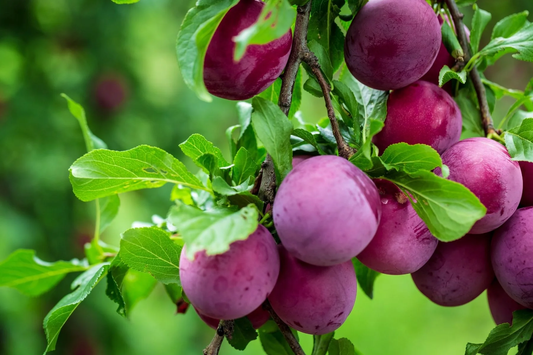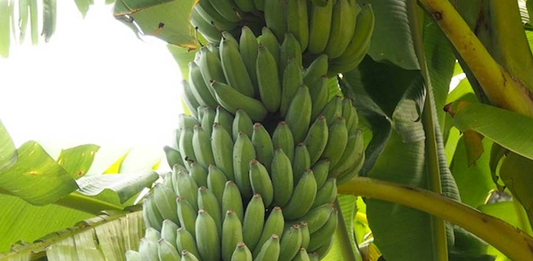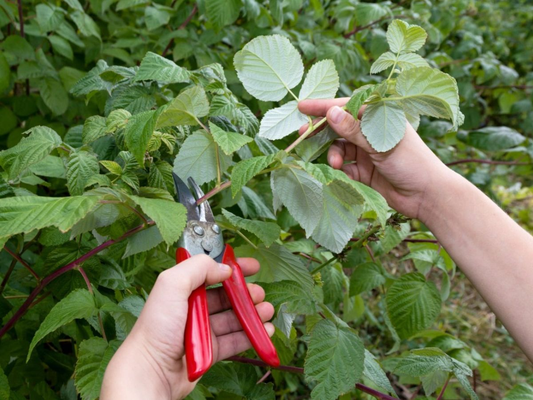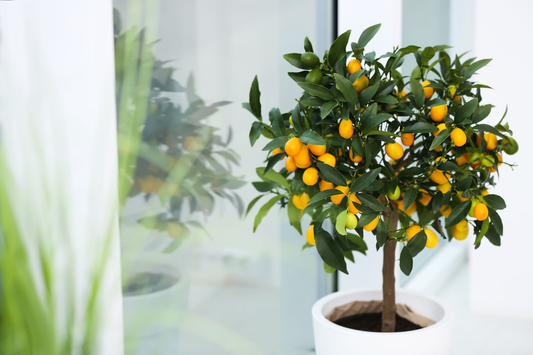How to Grow Vegetables Indoors
Share
- 1. Introduction
- 2. Why Grow Vegetables Indoors?
- 3. Choosing the Right Vegetables for Indoor Gardening
- 4. Essential Supplies for Indoor Vegetable Gardening
- 5. Understanding Light Requirements for Indoor Vegetables
- 6. Indoor Temperature and Humidity for Vegetables
- 7. Planting and Care Techniques
- 8. Managing Pests and Diseases Indoors
- 9. Harvesting Indoor Vegetables
- 10. Troubleshooting Common Problems in Indoor Vegetable Gardening
- 11. Advanced Tips for Successful Indoor Gardening
- 12. Cost Considerations and Budgeting for Indoor Vegetable Gardening
- 13. FAQ - Frequently Asked Questions
1. Introduction
Indoor vegetable gardening is a growing trend that allows people to grow fresh, nutritious produce right in the comfort of their own homes. Whether you live in an apartment, have limited outdoor space, or simply want to enjoy the benefits of homegrown vegetables year-round, indoor gardening offers a convenient and rewarding solution.
With advancements in indoor gardening technology and techniques, it’s easier than ever to create a thriving indoor garden. Growing vegetables indoors can help you overcome various challenges that outdoor gardening presents, such as:
- Limited space – Indoor gardening allows you to make use of small spaces, including windowsills, countertops, or even unused corners.
- Climate limitations – Indoor gardens are shielded from harsh weather conditions, making it possible to grow vegetables all year round, regardless of the outside temperature.
- Accessibility – Having your own vegetable garden indoors means you can harvest fresh produce whenever you need it, saving trips to the store.
- Control over growing conditions – You have the ability to control the temperature, humidity, and light, giving you an edge in providing optimal growing conditions for your plants.
Some additional benefits of growing vegetables indoors include:
- Fresh produce year-round: No need to rely on store-bought vegetables that may have been transported long distances.
- Cost savings: Growing your own vegetables can reduce your grocery bill.
- Health benefits: Growing your own food means you know exactly what’s in it – no pesticides or preservatives.
Indoor gardening provides a solution to many of the limitations that outdoor gardening presents. In the following sections, we will explore the necessary steps and tips for successfully growing vegetables indoors, from selecting the right plants to creating the perfect growing environment.

2. Why Grow Vegetables Indoors?
Indoor vegetable gardening offers a variety of benefits, making it an appealing choice for many gardeners. Whether you're new to gardening or a seasoned enthusiast, growing vegetables indoors provides the opportunity to enjoy fresh, healthy produce in a controlled environment. Here are some of the top reasons why growing vegetables indoors is a great option:
- Year-Round Growth: One of the biggest advantages of indoor gardening is that you can grow vegetables all year long, regardless of the outdoor climate. Cold winters, hot summers, and unpredictable weather conditions are no longer a barrier, allowing you to harvest fresh vegetables throughout the year.
- Easy Access to Fresh Produce: Having an indoor vegetable garden means you can enjoy fresh produce just steps away from your kitchen. No more trips to the grocery store for leafy greens, herbs, or tomatoes – they’re right at your fingertips whenever you need them!
- Space Optimization: Indoor gardening makes the most of available space, whether you're working with a small apartment or a compact house. Vegetables can be grown on windowsills, countertops, or in vertical gardens, allowing you to maximize your indoor space efficiently.
- Control Over Growing Conditions: Indoor gardening allows you to control critical factors such as temperature, humidity, and light. By providing the optimal environment for your vegetables, you can ensure healthy growth and higher yields, even in less-than-ideal conditions.
Aside from personal convenience and satisfaction, growing vegetables indoors also offers significant eco-friendly benefits:
- Reducing Food Miles: Growing your own vegetables indoors reduces the need for produce to be transported long distances. This can help cut down on the environmental impact caused by food transportation, especially for delicate, perishable items.
- Reducing Reliance on Store-Bought Produce: By growing your own vegetables, you become less dependent on grocery store chains, which often require significant energy use for refrigeration and packaging. This contributes to reducing overall waste and the environmental footprint of your food consumption.
3. Choosing the Right Vegetables for Indoor Gardening
Choosing the right vegetables is crucial for success in indoor gardening. Not all vegetables thrive indoors, and it's essential to select varieties that are well-suited to the growing conditions of your home. The following vegetables are ideal for indoor gardening:
- Herbs: Many herbs are well-suited for indoor gardening, including basil, parsley, mint, cilantro, and thyme. They require minimal space and can thrive on windowsills or in small containers.
- Lettuce: Lettuce is a fast-growing leafy green that adapts well to indoor conditions. Varieties like Romaine, Butterhead, and Leaf lettuce are perfect for small spaces and can be harvested in stages for continuous growth.
- Spinach: Spinach is another leafy green that does well indoors. It thrives in cooler temperatures and can be grown in containers with good drainage. Opt for compact varieties that are better suited for indoor environments.
- Tomatoes: While they require more light and space, dwarf tomato varieties such as 'Tiny Tim' or 'Balcony' are perfect for indoor gardens. Tomatoes require a lot of light, so ensure you have a sunny spot or supplemental grow lights.
- Radishes: Radishes grow quickly and don’t require much space. They are ideal for small indoor gardens and can be harvested in as little as three to four weeks. Choose varieties like 'Cherry Belle' or 'French Breakfast' for indoor success.
When selecting vegetables for your indoor garden, it’s important to consider the following factors:
- Available Space: If you have limited space, go for compact or dwarf varieties of vegetables. Leafy greens, herbs, and small root vegetables are great choices. Vertical gardens can also help you maximize space.
- Light Levels: Consider how much natural light your space receives. Vegetables like lettuce, spinach, and herbs do well with moderate light, while tomatoes and peppers need a lot of light to thrive. If your home has low natural light, consider using grow lights to supplement.
- Growing Time: Choose vegetables with shorter growing periods, such as radishes, lettuce, and herbs. These will give you quicker results and allow for multiple harvests throughout the year.
4. Essential Supplies for Indoor Vegetable Gardening
To set up a successful indoor vegetable garden, you'll need a few key supplies. Having the right tools and equipment will make a significant difference in your plants' health and growth. Below are the essential supplies you’ll need to get started:
-
Containers or Pots: When selecting containers for indoor vegetables, choose the right size to accommodate your plants' root systems. Ensure that pots have drainage holes to prevent waterlogging and root rot. The ideal pot size will depend on the vegetable you're growing:
- Small herbs and leafy greens: 6-8 inches in diameter
- Medium plants like lettuce and spinach: 10-12 inches in diameter
- Larger vegetables like tomatoes or peppers: 14-18 inches in diameter
- Soil: Indoor plants need a well-draining potting mix to thrive. Choose a high-quality potting mix that is specifically formulated for indoor use. A good potting mix will retain moisture while allowing excess water to drain away, preventing root rot. Avoid using garden soil, which can be too dense and lead to poor drainage indoors. Look for a mix that contains organic matter, perlite, or vermiculite for better aeration.
-
Fertilizers: Indoor vegetables benefit from regular feeding to maintain healthy growth. You can choose between organic or synthetic fertilizers, depending on your preference:
- Organic fertilizers: These are made from natural ingredients such as compost, worm castings, or fish emulsion. They provide slow-release nutrients and improve soil structure over time. Organic options are ideal for environmentally-conscious gardeners.
- Synthetic fertilizers: These are chemically manufactured and provide a quick, concentrated source of nutrients. Synthetic fertilizers are fast-acting but can sometimes result in nutrient imbalances if not used properly.
-
Tools: Basic gardening tools are necessary for indoor gardening. Here’s a list of tools to have on hand:
- Watering can: A small watering can with a long spout is perfect for indoor gardening, ensuring you can water plants without spilling.
- Gloves: Gardening gloves protect your hands from soil and help prevent cuts and scrapes when handling plants and tools.
- Scissors or pruning shears: These are essential for trimming excess growth, dead leaves, and harvesting herbs or vegetables.
-
Grow Lights: Proper lighting is essential for the growth of indoor vegetables, especially if you don’t have access to enough natural light. Grow lights provide the necessary spectrum of light for photosynthesis. The two most common types of grow lights are:
- LED lights: Energy-efficient and long-lasting, LED lights are ideal for indoor vegetable gardening. They produce less heat and can be adjusted for different light spectrums to support various stages of plant growth.
- Fluorescent lights: These are a more affordable option and are effective for growing herbs and leafy greens. However, they emit more heat and are less efficient than LEDs.

5. Understanding Light Requirements for Indoor Vegetables
Light is one of the most important factors in indoor vegetable gardening. Without adequate light, your plants won't thrive, and their growth may be stunted. Understanding the types of light plants need and how to position them for optimal sunlight exposure is essential for success. Here's everything you need to know:
-
Natural Light vs. Artificial Light: Indoor plants primarily rely on natural sunlight, but artificial light can supplement it when necessary. Let’s break down both types of light:
- Natural Light: This is the best source of light for your plants. Plants need sunlight for photosynthesis, and the amount of light they receive directly affects their growth. South-facing windows provide the most sunlight, while east- and west-facing windows also offer good light for most plants.
- Artificial Light: If you don’t have access to enough natural light, artificial lighting is an excellent alternative. Grow lights are designed to mimic natural sunlight, providing the spectrum of light necessary for plant growth. They are especially useful for places with limited sunlight or during the winter months when daylight is shorter.
-
Positioning Plants for Optimal Sunlight Exposure: To maximize the light your plants receive, it’s important to position them in the right spots. Here are some tips for optimal placement:
- South-Facing Windows: These are the best spots for most indoor vegetables, as they receive the most direct sunlight throughout the day. Place your plants here if possible.
- East or West-Facing Windows: These windows receive moderate sunlight, ideal for plants that don’t need as much light, such as leafy greens and herbs.
- Avoid North-Facing Windows: North-facing windows typically don’t provide enough light for most indoor vegetables. However, you can still grow low-light plants like herbs or lettuce in these locations.
-
Using Grow Lights: If natural sunlight isn’t sufficient, grow lights can help provide the right light spectrum for your plants. Here’s how to use them:
- Type of Grow Light: Choose between LED or fluorescent grow lights. LED lights are energy-efficient and emit less heat, while fluorescent lights are a more affordable option.
- Duration: Most indoor vegetables need 12-16 hours of light per day. Set your grow lights on a timer to ensure consistency. However, some plants like leafy greens may need slightly less light, around 10-12 hours, while fruiting plants like tomatoes may need 14-16 hours.
- Positioning Grow Lights: Position grow lights about 6-12 inches above the plants to prevent them from getting too hot. Adjust the height as your plants grow to maintain optimal light levels.
6. Indoor Temperature and Humidity for Vegetables
For indoor vegetable gardening to be successful, it’s essential to maintain the right temperature and humidity levels. Both temperature and humidity can have a significant impact on plant health and growth. Here’s what you need to know:
-
Ideal Temperature Range: Most indoor vegetables grow best in a temperature range of 65–75°F (18–24°C). This temperature range ensures that plants can carry out essential processes like photosynthesis and flowering without stress. However, specific plants may have slight variations in their temperature preferences:
- Cool-season crops like lettuce and spinach thrive at the lower end of the range, around 60–65°F (15–18°C).
- Warm-season crops like tomatoes and peppers prefer temperatures closer to 70–75°F (21–24°C).
-
Humidity Control: Indoor air can be quite dry, especially during the winter months when indoor heating is used. Many vegetables prefer higher humidity, typically between 50–70%. Here are some ways to improve humidity for your indoor plants:
- Humidifier: A humidifier can help maintain a consistent level of moisture in the air, preventing plants from drying out. Place it near your plants to increase humidity in the growing area.
- Misting: Lightly misting your plants with water a few times a week can help raise the humidity around them. However, avoid over-wetting leaves to prevent mold or mildew growth.
- Grouping Plants: Placing plants close together can create a micro-environment where moisture from the soil and leaves helps increase humidity levels naturally.
7. Planting and Care Techniques
Caring for indoor vegetables involves several key steps to ensure healthy growth. Whether you’re planting from seeds or seedlings, it’s important to follow the right techniques to maximize success. Here’s how to plant and care for your indoor vegetable garden:
-
Planting Seeds or Seedlings Indoors: Follow these steps for planting in containers:
- Choose the Right Container: Select a container with drainage holes to prevent waterlogging. The size should be appropriate for the mature size of your plant (e.g., a 6-inch pot for herbs or leafy greens, a larger pot for tomatoes).
- Prepare the Soil: Use a high-quality potting mix designed for indoor plants. Fill the container with soil, leaving about an inch from the top.
- Planting Seeds: If starting from seeds, sow them at the recommended depth (usually 2–3 times the size of the seed). Lightly cover with soil and water gently.
- Planting Seedlings: If using seedlings, carefully remove the plant from its nursery pot, making sure the roots aren’t damaged. Plant it in the container at the same depth it was in the original pot and water well.
-
Watering: Proper watering is crucial for indoor vegetables:
- Avoid Overwatering: Always check the moisture level of the soil before watering. Stick your finger about 1 inch into the soil—if it’s dry, it’s time to water. Overwatering can lead to root rot.
- Watering Techniques: Water the soil thoroughly until it drains from the bottom of the pot. Avoid getting water on the leaves to reduce the risk of fungal diseases. Use a watering can with a gentle spout for precise watering.
- Indoor Humidity Considerations: Indoor plants can dry out quickly due to low humidity. Consider using a humidity tray or misting plants lightly to retain moisture in the air.
-
Pruning: Regular pruning helps indoor plants grow stronger and healthier:
- Remove Dead or Yellowing Leaves: Regularly trim away any damaged or discolored leaves to improve airflow and reduce the risk of pests or disease.
- Pinch Off New Growth: Pinch off any new shoots or leaves that appear to be growing in excess. This encourages the plant to focus on producing healthy, strong leaves or fruit.
- Keep Plants Shaped: For vegetables like tomatoes, remove any suckers (small side shoots) that grow between the main stem and branches to maintain a strong, upright plant.
-
Support for Tall-Growing Plants: Certain indoor vegetables, like tomatoes or cucumbers, may require support as they grow taller:
- Staking Tomatoes: Use a wooden or metal stake to support tomato plants. Place the stake in the soil at planting time to avoid disturbing the roots later. Tie the plant loosely to the stake as it grows.
- Cucumber Trellis: For cucumbers, use a vertical trellis or netting to allow the plant to climb, saving space and preventing the fruit from touching the ground.
-
Pollination: Some indoor vegetables, like tomatoes, require manual pollination due to the lack of natural pollinators like bees:
- Using a Brush: Gently brush the inside of the flowers with a small paintbrush or cotton swab to transfer pollen between flowers. This mimics the action of bees.
- Shaking the Plant: For plants like tomatoes, gently shake the plant to help release pollen. You can also use an electric toothbrush by holding it near the plant to simulate vibrations.

8. Managing Pests and Diseases Indoors
Indoor vegetable gardens can be vulnerable to certain pests and diseases. However, with proper care and prevention, you can protect your plants and keep them healthy. Here’s how to manage pests and diseases in your indoor garden:
-
Common Indoor Pests: Several pests commonly affect indoor vegetables. Here’s a look at a few and how to prevent or eliminate them:
- Aphids: These small, soft-bodied insects suck sap from plants, causing stunted growth and yellowing leaves. To control aphids, gently wash them off with water or use a mild insecticidal soap.
- Spider Mites: Spider mites are tiny pests that cause speckled or yellow leaves and fine webs. Increase humidity around the plants and spray with neem oil or insecticidal soap to eliminate them.
- Whiteflies: Whiteflies are another common pest that can damage indoor vegetables. Use yellow sticky traps to capture them or spray with a neem oil solution.
- Fungus Gnats: These pests are attracted to damp soil and can damage roots. Let the soil dry out between waterings and use yellow sticky traps to catch adult gnats.
-
Natural Pest Control Methods: For a more eco-friendly approach, try these natural pest control methods:
- Neem Oil: Neem oil is a natural pesticide that can be used to control a variety of pests. Mix according to package directions and spray on affected areas of the plant.
- Insecticidal Soap: Insecticidal soaps are safe for indoor use and can be effective against soft-bodied insects like aphids and mites. Use as directed to avoid harming your plants.
- Beneficial Insects: Introducing beneficial insects, like ladybugs or predatory mites, can help control pests naturally. These insects will prey on common pests without harming your plants.
-
Preventing Diseases: Indoor environments can be prone to certain diseases like mold and mildew. Here’s how to prevent them:
- Good Air Circulation: Ensure proper airflow around your plants to prevent excess moisture buildup, which can lead to mold or mildew.
- Proper Watering: Avoid overwatering, as damp conditions promote fungal growth. Water your plants at the base, not on the leaves.
- Cleanliness: Regularly remove dead or decaying plant matter from the soil or surface to reduce the risk of fungal infections.
- Humidity Control: Maintain balanced humidity levels, as too much moisture can create a breeding ground for mold. Use a dehumidifier if needed.
9. Harvesting Indoor Vegetables
Harvesting your indoor vegetables at the right time ensures peak flavor and quality. Here’s how to know when to harvest and tips for maximizing your harvest:
-
When to Harvest: Different types of vegetables have different harvesting times:
- Herbs: Harvest herbs like basil, mint, and parsley once the plant has enough mature leaves. For continuous growth, prune the top leaves to encourage new growth at the base. Avoid cutting more than one-third of the plant at a time.
- Leafy Greens (Lettuce, Spinach): Harvest leafy greens when they reach a good size (typically 4-6 inches tall). For baby greens, pick them early; for full-sized leaves, wait until the leaves are mature. Cut the outer leaves first, leaving the inner leaves to continue growing.
- Tomatoes: Tomatoes should be harvested when they are fully colored and slightly soft to the touch. Be gentle when pulling them from the plant to avoid damaging the vine.
- Radishes: Harvest radishes when they have grown large enough (usually 3–4 weeks after planting). Gently pull them from the soil and remove any leaves.
-
Extending the Harvest Period: Staggered planting is a great way to extend your harvest:
- Staggered Planting: Plant new crops every few weeks to ensure a continuous supply of fresh vegetables. This method works particularly well for crops like lettuce, spinach, and herbs.
- Succession Planting: Harvest the mature crops first, then plant new seeds in the same pots for a new cycle of growth.
-
Herbs vs. Larger Vegetable Crops: Harvesting methods differ between herbs and larger vegetables:
- Herbs: Herbs are often harvested by snipping off the leaves or stems with scissors or pruning shears. Be mindful not to overharvest to allow the plant to continue growing.
- Larger Vegetables (Tomatoes, Peppers): These require careful handling when harvesting. Use a sharp knife or scissors to cut the fruit from the plant to avoid damaging the stem or vine.

10. Troubleshooting Common Problems in Indoor Vegetable Gardening
Even the most seasoned indoor gardeners can encounter issues with their plants. Here are some common problems and troubleshooting tips to keep your indoor vegetable garden healthy:
-
Yellowing Leaves: Yellowing leaves can indicate a variety of issues:
- Overwatering: If leaves are yellow and soft, overwatering might be the issue. Ensure the soil is not constantly wet. Allow the soil to dry out between waterings and ensure proper drainage in containers.
- Underwatering: On the other hand, yellowing leaves can also be a sign of underwatering. If the leaves are dry and crispy, water your plants more frequently.
- Nutrient Deficiency: A lack of essential nutrients, especially nitrogen, can cause yellowing leaves. Fertilize your plants with a balanced, organic fertilizer to provide the necessary nutrients.
-
Slow Growth: If your plants are growing slowly or stagnating, the following issues might be the cause:
- Light Insufficiency: Indoor vegetables need a minimum of 6 hours of sunlight or artificial light per day. If growth is slow, consider moving your plants to a brighter location or supplementing with grow lights.
- Temperature Stress: If the room is too cold or too hot, plants may grow slowly. Ensure the temperature stays between 65–75°F (18–24°C) for optimal growth.
- Overcrowding: If plants are too close together, they may compete for light and nutrients, leading to stunted growth. Thin out overcrowded plants to allow for better air circulation and access to resources.
-
Leggy Plants: Leggy or spindly plants with long, weak stems are typically a result of insufficient light:
- Increase Light Exposure: Move your plants to a sunnier spot or provide additional light with grow lights. Ensure that the light source is placed close enough to the plants, about 6–12 inches away from the foliage.
- Prune Regularly: Pruning leggy plants can help encourage fuller, healthier growth. Trim back any excessively long stems to encourage branching and new growth.
11. Advanced Tips for Successful Indoor Gardening
For those looking to take their indoor gardening to the next level, here are some advanced techniques to optimize your indoor space and enhance plant growth:
-
Hydroponics: Hydroponics is a method of growing plants without soil, using a nutrient-rich water solution instead.
- What is Hydroponics? In a hydroponic system, plant roots are submerged in water, where they can access nutrients directly. This system can lead to faster plant growth and higher yields since nutrients are readily available.
- Advantages: Hydroponics uses less water than traditional soil-based gardening, making it ideal for indoor spaces. It also eliminates soil-borne diseases and pests.
-
Aquaponics: Aquaponics combines hydroponics with aquaculture (fish farming). In this system, fish and plants work together in a closed-loop environment.
- How it Works: Fish produce waste that provides essential nutrients for the plants. The plants filter and clean the water for the fish, creating a mutually beneficial system.
- Benefits: Aquaponics systems are highly sustainable and environmentally friendly, providing both fresh fish and vegetables. It also reduces water usage compared to traditional methods.
-
Vertical Gardening: Vertical gardening is a technique used to grow plants upwards, making efficient use of limited space.
- How to Implement: Use shelves, racks, or hanging planters to grow vegetables vertically. This works well for vining crops like tomatoes, cucumbers, and peas, as well as leafy greens.
- Advantages: It maximizes space in smaller areas and improves airflow around plants, reducing the risk of pests and diseases.
-
Companion Planting: Companion planting involves pairing plants that benefit each other in terms of growth, pest control, and overall health.
- Why It Works: Certain plants, when grown together, can help repel pests, attract beneficial insects, and even enhance the growth of neighboring plants. For example, basil and tomatoes are a classic pair for indoor gardening, as basil helps to deter pests from tomato plants.
-
Best Pairs: Some beneficial indoor plant combinations include:
- Herbs and Leafy Greens: Herbs like basil and parsley can benefit lettuce and spinach by deterring pests.
- Tomatoes and Marigolds: Marigolds can repel aphids and other pests that commonly affect tomato plants.
12. Cost Considerations and Budgeting for Indoor Vegetable Gardening
Indoor vegetable gardening can be cost-effective with proper planning. Here's how to break down the costs and budget for your indoor garden:
-
Initial Setup Costs: The upfront costs include containers, soil, grow lights, and seeds or seedlings. Here's a basic breakdown:
- Containers: Pots or containers can range from a few dollars to more expensive ones depending on size and material. Plastic pots are the most affordable option.
- Soil and Fertilizer: A high-quality potting mix costs around $10-$20 per bag, while organic fertilizers can add another $5-$10.
- Grow Lights: Grow lights are one of the more significant costs. LED lights can cost $20-$100 depending on size and brand, but they are energy-efficient and long-lasting.
- Seeds/Seedlings: Vegetable seeds typically cost $1-$5 per packet, with most packets containing enough seeds for multiple plants.
- Ongoing Maintenance Costs: These include water, electricity (for grow lights), and occasional fertilization. Grow lights can increase your electricity bill by $5-$20 per month depending on usage.
-
Money-Saving Tips:
- Reuse Containers: Repurpose old containers or jars to save on costs.
- Harvest Seeds: Save seeds from your plants for the next planting cycle, reducing the need to buy new seeds.

13. FAQ - Frequently Asked Questions
Here are answers to some frequently asked questions about growing vegetables indoors:
-
Q1: Can I grow vegetables in my kitchen?
Yes, many vegetables can thrive in your kitchen, especially if you have access to natural light from windows. Ideal vegetables include leafy greens (like lettuce and spinach), herbs (such as basil and parsley), and small root vegetables (like radishes). To optimize space and light:
- Use windowsills or countertops near bright windows.
- Choose compact plants that don’t require too much space.
- Consider using vertical gardening solutions like hanging baskets or wall-mounted planters.
-
Q2: How often should I water my indoor plants?
Watering frequency depends on the plant type, container size, and environmental conditions. As a general guideline:
- Check the soil moisture every 2-3 days. Water when the top inch of soil feels dry.
- Smaller pots dry out faster and may require more frequent watering.
- Use a moisture meter to get accurate readings on soil moisture levels.
-
Q3: Can I grow vegetables indoors without grow lights?
It is possible to grow vegetables indoors without grow lights, but it depends on the natural light available in your space. Some tips:
- Position plants near south-facing windows or areas with direct sunlight.
- Choose plants that can tolerate low light, such as herbs or leafy greens.
- If natural light is insufficient, consider supplementing with artificial lighting, such as LED or fluorescent bulbs.
-
Q4: What are the best vegetables for beginner indoor gardeners?
Some easy-to-grow vegetables for beginners include:
- Lettuce: Grows quickly and doesn’t require deep containers.
- Radishes: Fast-growing and thrive in smaller pots.
- Herbs: Basil, parsley, and mint are ideal for indoor gardening.
-
Q5: How do I deal with indoor plant pests?
Indoor plants can attract pests, but there are several organic pest control methods you can try:
- Neem oil: A natural pesticide that can be sprayed on plants to combat pests like aphids and spider mites.
- Insecticidal soap: Safe for indoor plants and effective against soft-bodied insects.
- Beneficial insects: Consider introducing ladybugs or predatory mites to control pests.
- Regularly inspect your plants for pests and remove affected leaves promptly.
Additional Resources
Plants that Attract Hummingbirds




